What not to wear in Parliament
- Published
The House of Commons and the House of Lords are a hotbed of rules, procedures and customs, including on what members may and may not wear when they are inside the chamber...

Speaker
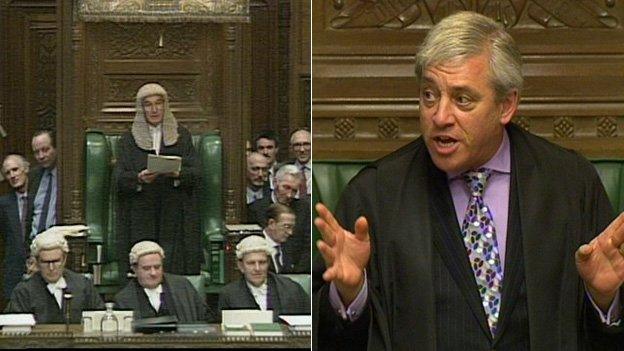
Traditionally, the Speaker of the House of Commons, who presides over the debates, has always dressed in a ceremonial black robe.
The Speaker's waistcoat, cuffs and winged collar were abandoned by John Bercow when he took up the post in 2010, who preferred instead a lounge suit and tie under his black gown.
He was not the first to opt out of the full attire, however, with his predecessors Betty Boothroyd and Michael Martin casting aside the long-bottomed wig and knee breeches and tights.
The last Speaker to kit himself out in the whole garb was Bernard Weatherill, who served in the role from 1983 to 1992.

Businesslike attire
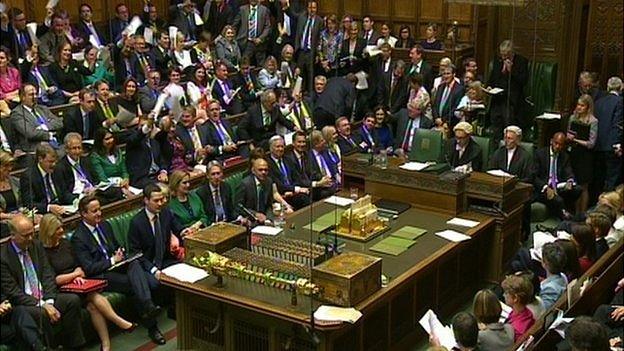
Nowadays, male and female MPs are expected to wear formal businesslike clothes, which includes a jacket and tie for men.
Parliament's official rule book Erskine May only has a limited set of rules on members' dress; namely that military insignia or uniforms should not be worn in the Commons and that the custom is "for gentlemen members to wear jackets and ties".
That said, as a parliamentary factsheet notes, external, the Speaker has "on a number of occasions, taken exception to informal clothing, including the non-wearing of jackets and ties by men".
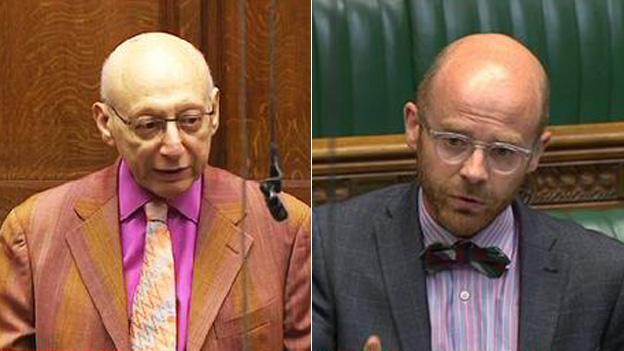
Some of the more eye-catching outfits in the House
Falling foul of the dress code has been something of "a political statement" in the past, the factsheet notes, recalling how Oliver Cromwell wore a "plain cloth" linen suit made by "an ill country tailor", and a hat without a hat band.
Arguably Green MP Caroline Lucas fell in to this bracket when she turned up to a Westminster Hall debate in 2013 wearing a "No More Page Three" slogan t-shirt - which promptly saw her ticked off by the chair for breaking the sartorial rules.
Caroline Lucas was asked to stick to the dress code if she wished to continue the debate
Having said that, Labour's deputy leader Harriet Harman managed to get away with a garment displaying a feminism campaign slogan to Prime Minister's Questions last year.
A Commons spokesman said afterwards: "There are many demands on the Speaker's attention whilst he is in the chair, particularly during questions to the prime minister. If a member's dress is not in line with the conventions of the House and it is brought to the chair's attention, he acts accordingly."

There have been calls from some MPs for a less formal dress code, with Labour MP Kevin Brennan suggesting in 2002 the idea of "dress down" Thursdays.
And back in the summer of 2014, Conservative MP Henry Smith made an appeal to go further, tweeting, external: "Can we please, even if just today, wear shorts instead of suits in the Commons? Struggling with the hot air, externally (and internally)!"
Needless to say, neither idea gained traction.
But the two MPs can probably be thankful that the wearing of wigs is a tradition confined firmly to the eighteenth century (bar for the clerks, and the Speaker if he or she so chooses).
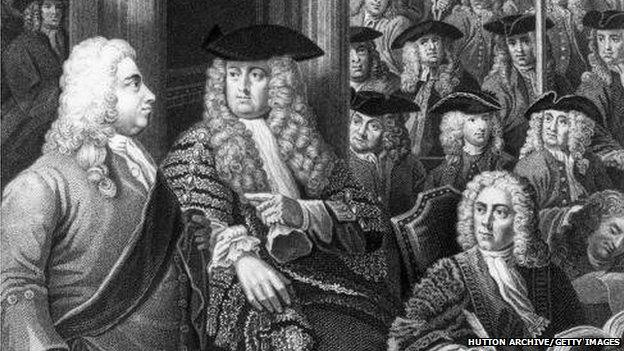

Hats
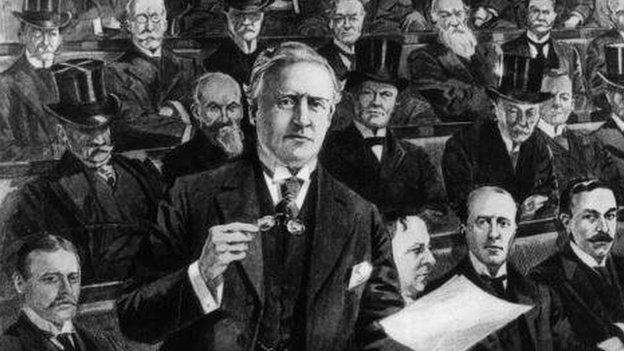
Hats must not be worn in the House of Commons - although that has not always been the case.
A top hat was part of many MPs's daily attire over the past few centuries. They could be worn in the chamber, but not upon entering or leaving, nor when addressing MPs.
MPs could don headgear when raising a point of order during a vote however, although this tradition has not survived the Commons modernisation process.
The idea had been that they could more easily be seen by the Speaker during the hustle and bustle of a division, as MPs filed in and out of the chamber. Indeed, two collapsible, black opera hats were kept in the Commons chamber at all times for this very purpose.
However, in 1998 the Labour leader of the House, Ann Taylor, announced the possible end to the practice as part of plans to update parliamentary procedures.
"I know some members may feel that they look particularly fetching in the opera hat, but it really does make the House of Commons look ridiculous," she told MPs.
And so it came to pass. Members now just move along the green benches to be nearer to the Speaker when they want to raise a point of order.

Armour
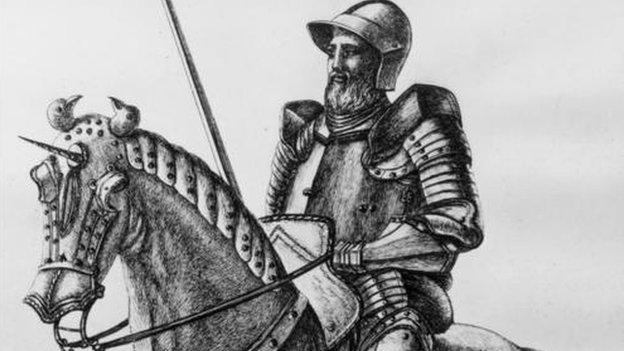
Definitely not allowed
Not so much of an issue nowadays, but the wearing of armour is not allowed in the House of Parliament, thanks to a law dating back to 30 October 1313, under King Edward II's reign.
Similarly no kind of arms (swords, for example) are permitted. The only exception to the rule is the Serjeant at Arms, who still carries a sword whilst in the chamber.
The purple ribbons hanging in the members' cloakrooms are said to have been used by MPs store their swords, although today's politicians tend to use them to hang their rather-less-harmless umbrellas.
In similar vein, medals are not to be worn by MPs either - or badges.

'Manbags'
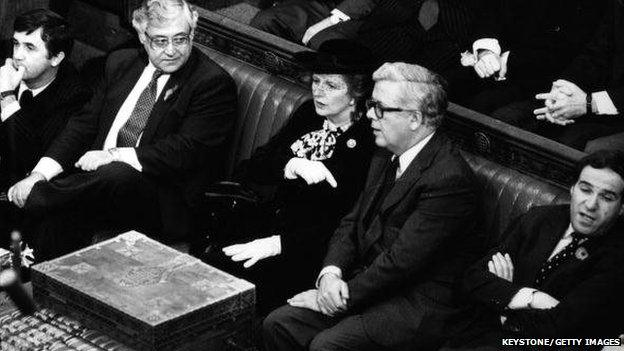
One rule for the women and a different for the men?
Bow-tie wearing Mr Docherty, one of the many new SNP 2015 intake, has protested that men are not allowed to take bags in to the chamber, but women are.
"Even in this chamber," he said during a debate on equal pay, "we perpetuate stereotypes of gender. Honourable gentlemen are not allowed to bring a bag into the chamber, and yet honourable ladies are more than delighted to bring in a small handbag."
He found a perhaps unlikely ally in Conservative MP Stephen Phillips, who declared that "as one of the few members of the House who has a man bag" he would "stage a protest" with the SNP MP.
"We will both bring in our bags and see whether we are upbraided by the chair and receive some sort of censure for doing so," he said.
According to a Commons spokesman: "There is no specific rule about 'manbags' as such. One of the conventions and courtesies of the House, which applies to all MPs, is that briefcases should not be brought into the chamber."

And it's not just MPs that have to play by the rules...
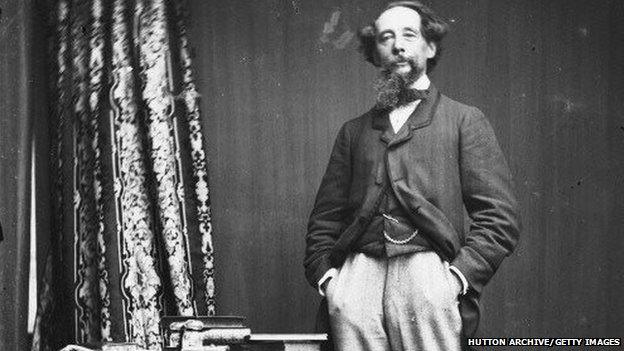
English novelist Charles Dickens belongs to the Press Gallery's hall of fame
Situated just above the Speaker's chair in the Commons is an area known as the Press Gallery, where journalists reporting on Parliament observe the proceedings.
And they, too, are subject to parliament's dress codes, with male members required to wear a jacket and tie.
However, the rules were relaxed during the UK heat wave at the beginning of July 2015 - much to the journalists' delight.
There are no rules dictating what members of the public have to wear when visiting the Public Gallery in the Commons.

What about the House of Lords?
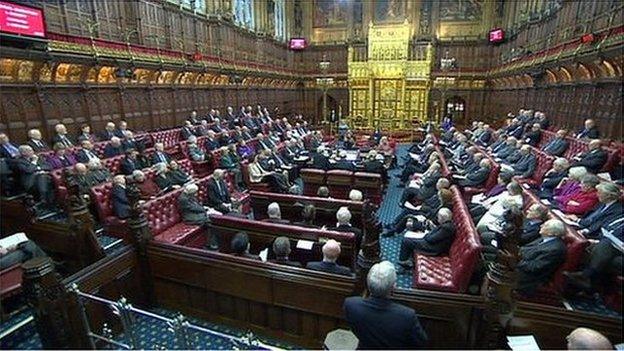
Perhaps the best known pictures of the House of Lords are from the State Opening of Parliament when its members are dressed head to toe in their finest, ermine gowns.
But, alas, that is not what they wear during the day-to-day business in the chamber. They are required to look smart, however, with men to be clothed in a jacket and tie.
Guests who want watch proceedings in the chamber "Below the Bar" should be "dressed appropriately", with male guests required to wear a jacket and tie, according to the members' handbook.
Anyone wearing jeans or t-shirts is not allowed in this area, but they are welcome to sit in the public gallery, it says.
"In the Peers' Dining and Guest Dining Rooms, the Peers' Guest Room and the Barry Room, men are required to wear a jacket and tie. Women and children should be appropriately dressed," the handbook adds.